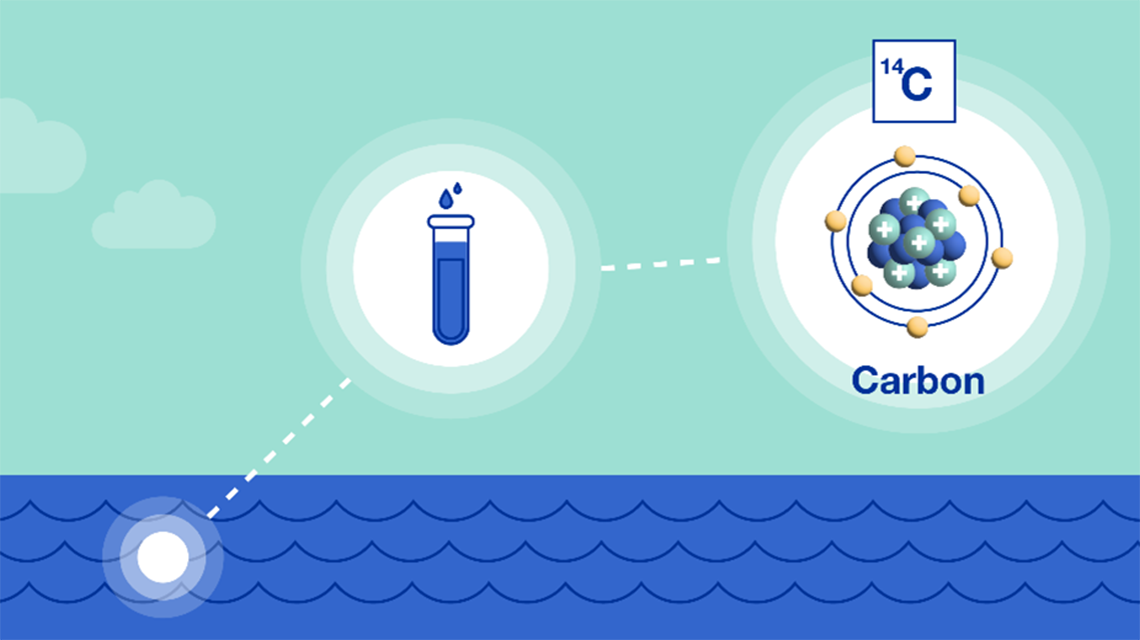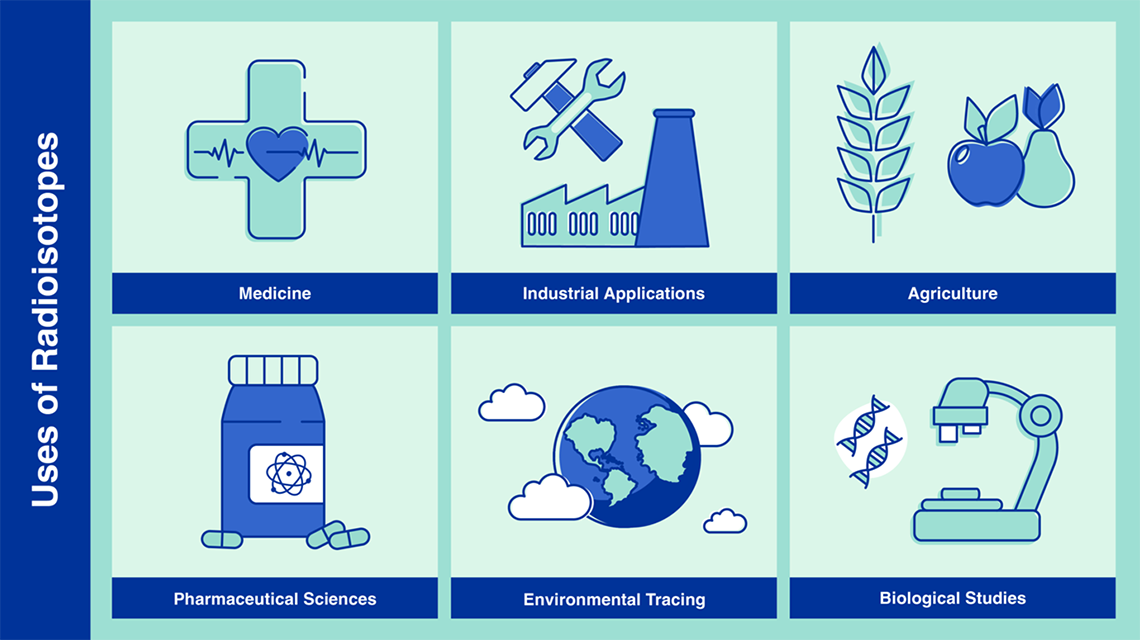Like everything we see in the world, isotopes are a type of atom, the smallest unit of matter that retains all the chemical properties of an element. Isotopes are forms of a chemical element with specific properties.
You can see the different chemical elements on the periodic table.
Each element is distinguished by the number of protons, neutrons and electrons that it possesses. The atoms of each chemical element have a defining and same number of protons and electrons, but - crucially - not neutrons, whose numbers can vary.
Atoms with the same number of protons but different numbers of neutrons are called isotopes. They share almost the same chemical properties, but differ in mass and therefore in physical properties. There are stable isotopes, which do not emit radiation, and there are unstable isotopes, which do emit radiation. The latter are called radioisotopes.
Nuclear techniques are used to measure the amounts and proportions of isotopes in matter, and trace their origin, history and sources based on this information. These measurements help experts to understand, for instance, terrestrial and aquatic systems, the volume of certain vitamins absorbed by the body, or the amount of fertiliser plants take up.
Learn more about the different types of isotopes.
What is an isotopic signature?
An isotopic signature is the set of ratios between the amount of the various isotopes of an element in a sample.
Isotopic signatures are commonly known as fingerprints, because they are similar to human fingerprints and are used to track and trace. They are found in water, land, plants and animals. By tracing these fingerprints, scientists can evaluate:
- the migration of species on land and in water
- food chains and dietary changes of animals
- geographical and botanical provenance of food
- the age and quality of water bodies including groundwater aquifers
- origins of water and atmosphere pollution
For example, the naturally occurring isotope carbon-14 present in water is used to understand the age of water and other organic materials.
Read the IAEA Bulletins to learn more about the importance and uses of isotopes and their signatures.
Stable isotopes
The first 80 elements on the periodic table have stable isotopes. The properties of stable isotopes allow them to be used to understand and manage water and land resources. They are also used in environmental studies, nutrition assessments and forensics.
Naturally occurring stable isotopes such as isotopes of hydrogen are used by measuring their amounts and ratio in samples of water to determine the water's age and origin, understand its history and acknowledge its sources. This is known as isotope hydrology.
Stable isotopes can be used to study land, humans, animals, insects and plants. For example, isotopes are used to map the migration path of butterflies and help protect the resources in their breeding environment.
They can also be used in agriculture. Using bio nitrogen fertilisers labelled with the nitrogen-15 stable isotope (15N), scientists can track and determine how effectively crops are taking up the fertiliser. This is important as plants need to absorb nitrogen to convert it into necessary proteins. Using 15N allows scientists to determine how much fertiliser is needed for crops to reach maximum yield.
Read about stable isotopes.
Radioisotopes
There are more than 3000 known radioisotopes. They are the unstable form of an element. They emit different levels of radiation, which makes them useful in medicine, industry, agriculture, radiopharmaceutical sciences, industrial applications, environmental tracing and biological studies.
Radioisotopes are artificially and safely produced in research reactors and accelerators. One use of radioisotopes is to manage cancer and chronic diseases using radioisotope therapy, which treats cancerous cells in a safe and effective manner. Other uses range from creating better health care products by removing or neutralising chemicals, bacteria and toxins which pose a hazard.
Find out the further uses of radioisotopes and their products.
What is the role of the IAEA?
- The IAEA helps countries build capacity to use isotopic techniques and to produce radioisotopes and radiopharmaceuticals.
- The IAEA assists national experts in enhancing the quality of their analytical measurement data through the provision of reference materials, validated procedures, proficiency tests and guidelines for environmental protection.
- The IAEA's Technical Cooperation Programme often uses isotopic tools to address priorities in developing health and nutrition standards, improving food and agriculture production, tracing back the origin of food and the source of greenhouse gasses and pollutants and managing water supplies.
- Coordinated Research Projects led by the IAEA brings together institutes to establish networks and databases of isotopes and isotopic research.
- The Global Network of Isotopes in Precipitation, operated by the IAEA and the World Meteorological Organization, offers scientific advice, logistics and technical support for research and the use of the technology.
- The IAEA also operates the Global Network of Isotopes in Rivers, which collects data on isotopes of rivers around the world and assists water resource management.
- The IAEA assists countries interested in setting up radioisotope production facilities, from consultation and selection of facilities and methods to supervising the establishment of production centres.












